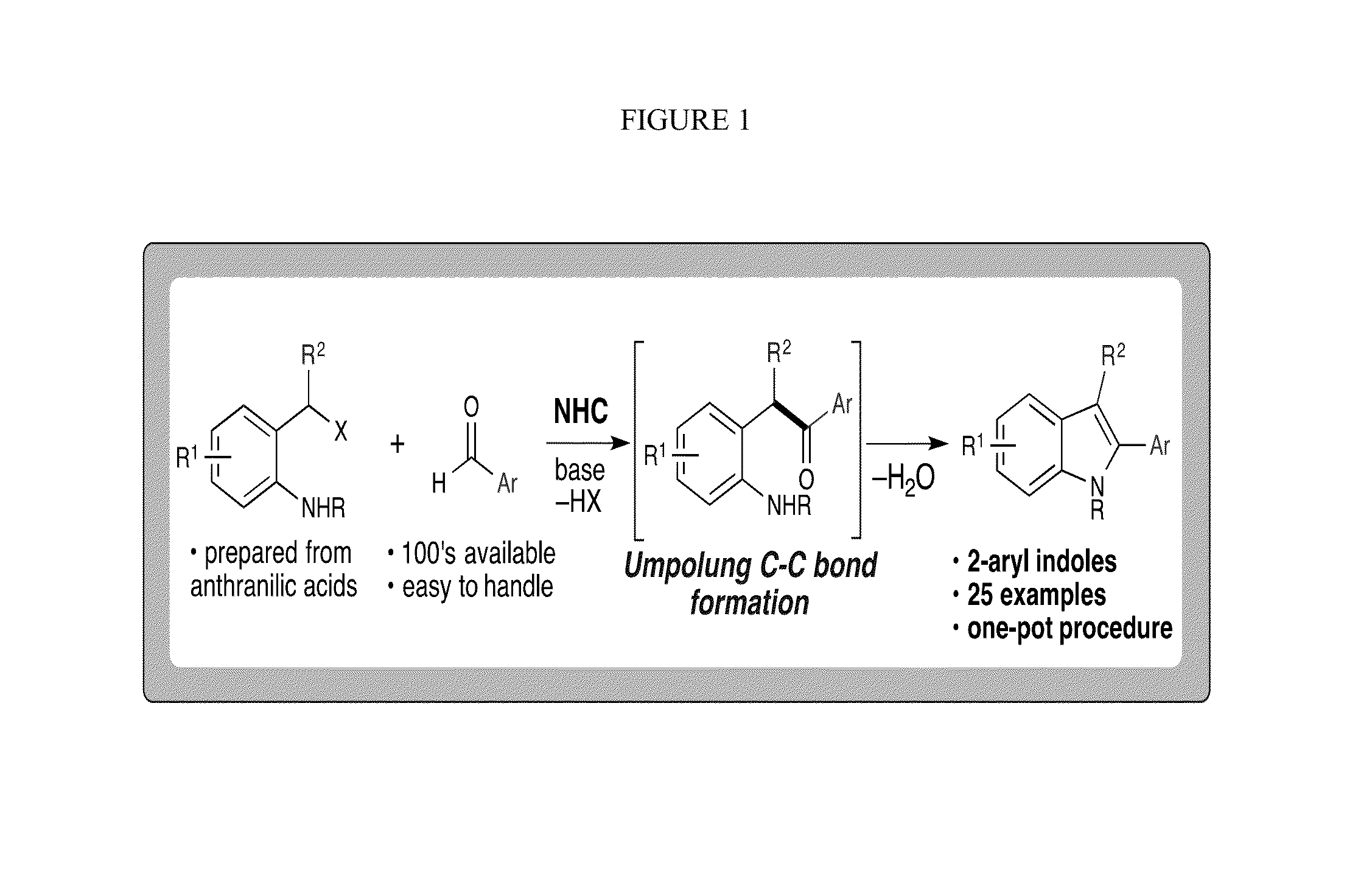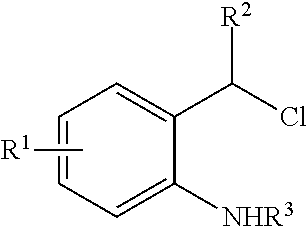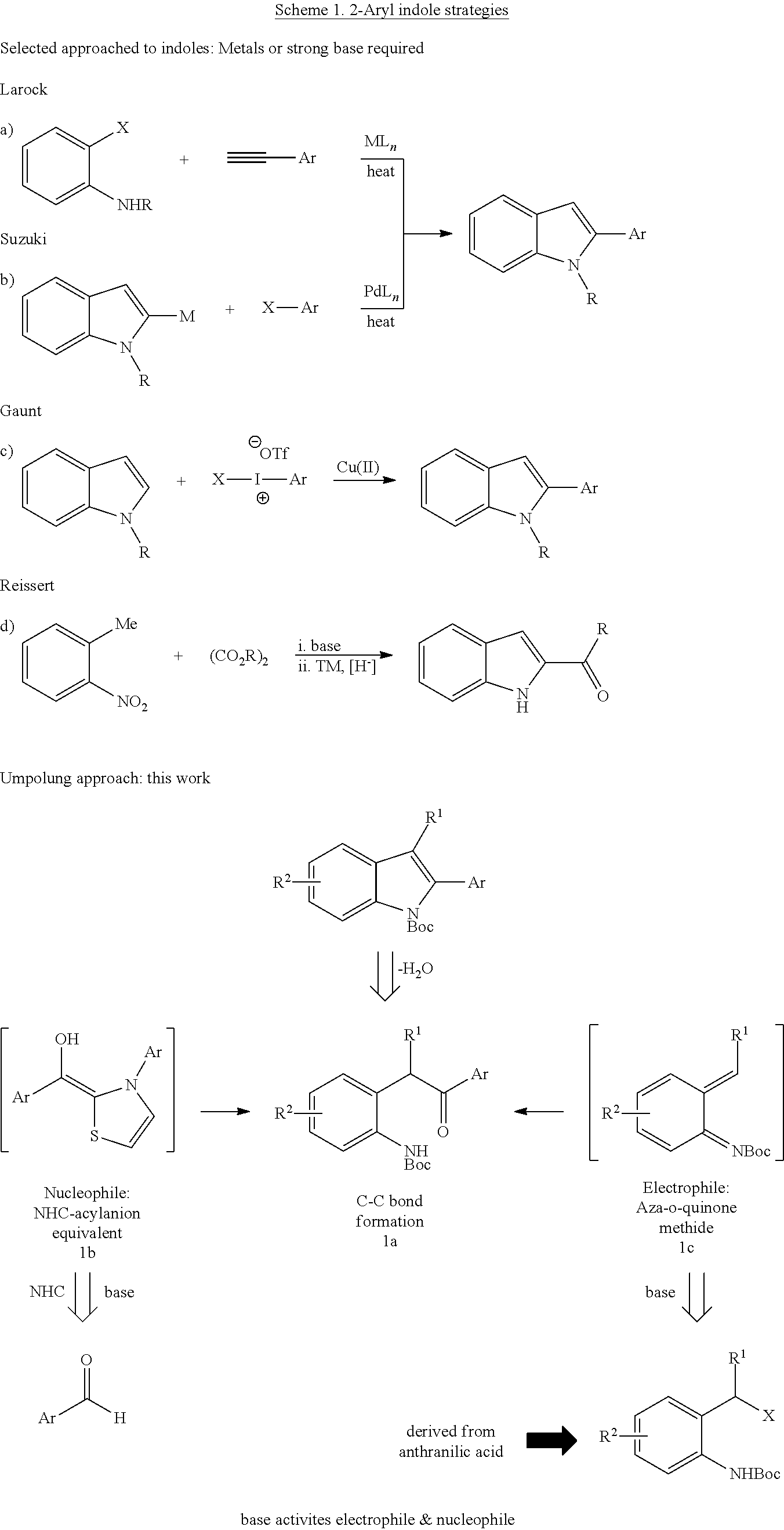N-Heterocyclic Carbene-Catalyzed Synthesis of 2-Aryl Indoles
a carbene and synthesis technology, applied in the field of n-heterocyclic carbenecatalyzed synthesis of 2aryl indoles, can solve the problems of low yield, limited reaction scope, regiochemistry problems, etc., and achieve the effect of moderate reaction conditions
- Summary
- Abstract
- Description
- Claims
- Application Information
AI Technical Summary
Benefits of technology
Problems solved by technology
Method used
Image
Examples
example 1
Procedure for synthesis of 2,6-diethylphenyl N-aryl thizaolium precatalyst
[0030]
example 1a
3-(2,6-diethylphenyl)-4,5-dimethylthiazole-2(3H)-thione
[0031]To a solution of 2,6-diethylaniline (5.82 mL, 35.3 mmol) dissolved in DMSO (17.7 mL) was added sodium hydroxide solution (20 M, 1.80 mL, 35.3 mmol) at ambient temperature with stirring. After 10 min, the flask was cooled in an ice-bath followed by drop-wise addition of carbon disulfide (2.128 ml, 35.3 mmol). The mixture was allowed to stir for 1 h at ambient temperature after which time the mixture was cooled in an ice-bath and 3-chlorobutan-2-one (3.57 mL, 35.3 mmol) was added with stirring. The ice-bath was removed and stirred at ambient temperature overnight. Water (DI, 35 mL) was added and the mixture was stirred at 0° C. for 10 min. Then the supernatant solution was decanted three times. The resulting slurry was dissolved in ethanol (40 ml), added concentrated hydrogen chloride (2.0 mL) and refluxed for 1 h followed by cooling and placement in a freezer at −30° C. overnight to promote precipitation. The precipitate wa...
example 1b
[0032]
3-(2,6-diethylphenyl)-4,5-dimethylthiazol-3-ium perchlorate (C)
[0033]To a solution of the thione of example 1a (3.0 g, 10.81 mmol) dissolved in glacial acetic acid (43.3 mL) was added hydrogen peroxide (30% by wt in H2O, 3.56 mL, 35.7 mmol) drop-wise at 0° C. followed by stirring at 0° C. for 1 h. After the solvent and other volatiles were removed in vacuo, the residue was dissolved in methanol (10 mL) followed by addition of sodium perchlorate (5.41 g, 44.2 mmol) in a solution of methanol / water (2:1, 40 mL) at 0° C. After stirring for 30 min, water (15 mL) was added and the mixture was extracted with dichloromethane (3×25 mL). The combined organic layers were dried with anhydrous sodium sulfate and the solvent was removed in vacuo. The impure residue was recrystallized from a dichloromethane / ether / methanol mixture (5:5:1, 20 mL) to afford the desired thiazolium C as a fine tan powder (3.34 g, 9.66 mmol, 89%). Analytical data for C: 1H NMR (500 MHz, CDCl3) δ 9.76 (s, 1H), 7.55...
PUM
 Login to View More
Login to View More Abstract
Description
Claims
Application Information
 Login to View More
Login to View More - R&D
- Intellectual Property
- Life Sciences
- Materials
- Tech Scout
- Unparalleled Data Quality
- Higher Quality Content
- 60% Fewer Hallucinations
Browse by: Latest US Patents, China's latest patents, Technical Efficacy Thesaurus, Application Domain, Technology Topic, Popular Technical Reports.
© 2025 PatSnap. All rights reserved.Legal|Privacy policy|Modern Slavery Act Transparency Statement|Sitemap|About US| Contact US: help@patsnap.com



